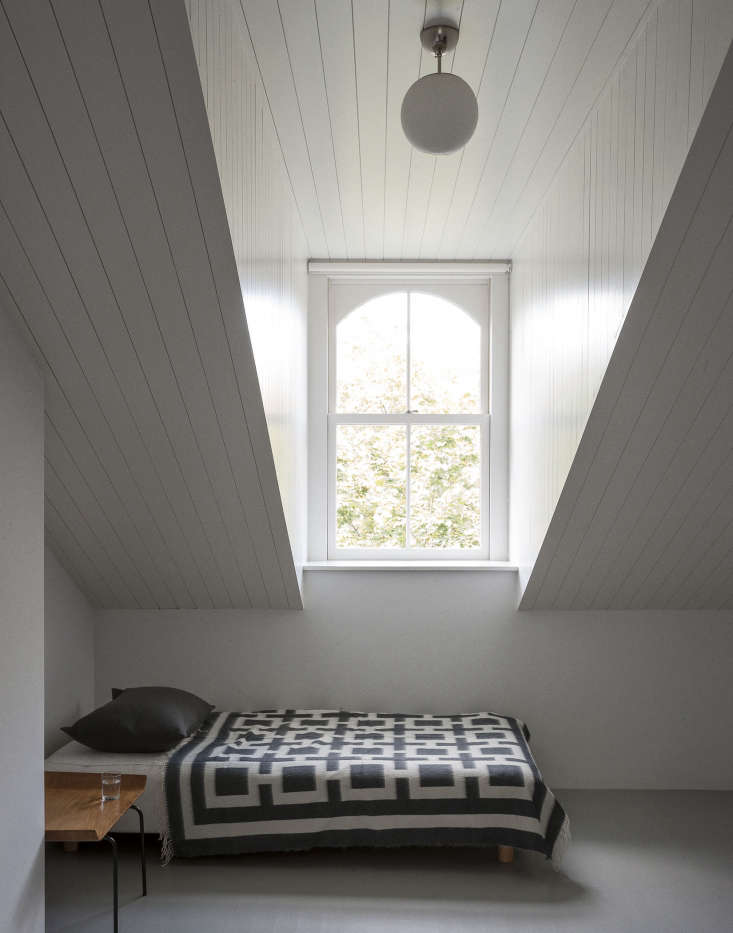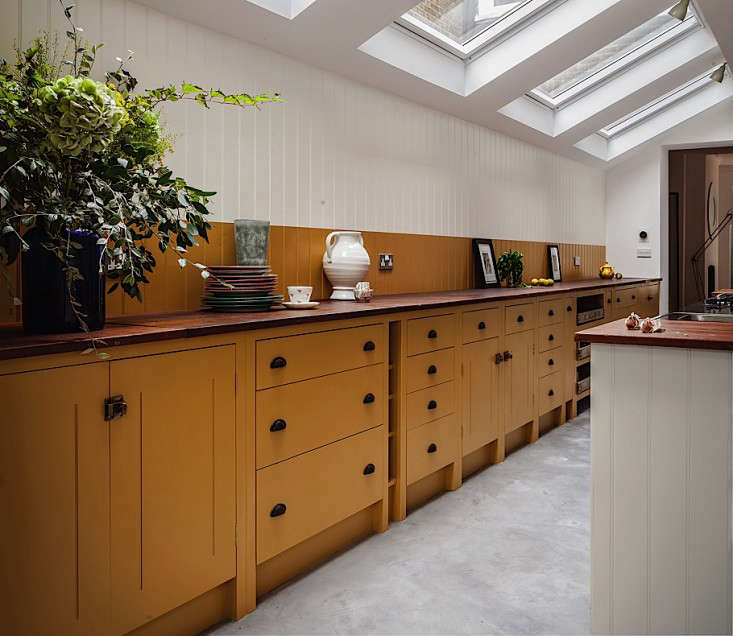In addition to linen and cotton, wool is one of our tried-and-true, go-to textiles for all over the house. It’s both hardy (as in a dependable wool rug) and luxurious (as in soft sheepskin blankets), and we love the way it looks in all its forms. But wool has other benefits, too: It’s eco-friendly, water-resistant, antibacterial, and even has the potential to help you sleep better. It’s also the traditional gift for wedding anniversary number seven (in case you want to drop any hints). Here’s what to know about this all-purpose, dependable material.
N.B. Featured image of the March Indigo Sturbridge Blanket, from 10 Easy Pieces: Winter Wool Blankets.

1. It’s been around for millennia.
Weaving wool is an ancient practice: the oldest known woven wool textile in Europe was found preserved in a Danish bog, and is estimated to date from 1500 BCE.
2. It doesn’t always come from sheep.
Though we commonly think of wool being made from sheep, when they’re sheared in spring, the wide category of “wool” actually includes textiles made from the fur of alpacas, llamas, camels, goats, and other animals. Cashmere and mohair (both from goats) are types of wool, as is angora.

3. It wicks moisture.
Fan found out, when she ordered a wool dish-drying mat, that wool is naturally water-resistant (that’s why she dubbed it her life-changing dish drying mat). She noted that, as she says, “when you place just-washed items on the mat, you can actually see drops of water resting on top of the wool.” And: “Whatever water it absorbs eventually evaporates. The mat never feels soggy.” That’s because wool fibers both repel and absorb moisture: The exterior of the fibers is water resistant, but the interior can absorb a huge amount—30 percent of its weight. This makes it a great choice for dish drying mats, bedding, and socks alike: Whatever moisture is absorbed will be released, keeping the wearer or sleeper comfortably cool and dry.

4. It has antibacterial properties.
Because wool doesn’t hold moisture, it’s less likely to be a breeding ground for bacteria, mildew, mites, and other unpleasantries—enough to convince us to invest in wool mattress toppers immediately.
5. It’s flame resistant.
Wool is more flame resistant than many other fibers; if it does catch fire, it chars and burns out, rather than melting or spreading the flames. This makes it the required choice for carpets on trains and airplanes as well as for firemen’s uniforms and army blankets.
6. And it’s biodegradable.
Wool is completely biodegradable and a renewable resource: Sheared sheep, and other animals, will regrow their coats.

7. Itchy? You need a finer wool.
Many people associate wool with itchiness, maybe even a runny nose—and may think they’re allergic to it. But actual allergies to wool are rare; most likely the itchiness is an aversion to thicker wool fibers, and a runny nose is a reaction to dust mites caught in the wool. Source finer wools and shake and air out your woolens frequently to help.

8. It’s used in pianos and baseballs.
Among its other characteristics, wool absorbs sound, which is why it’s used to cover the tiny hammers inside of a piano as well as in some sound systems and speakers. And baseballs are packed with wool so that they can withstand the impact of a fast-swinging bat.
9. It rarely needs to be washed.
Because of wool’s antibacterial properties, wool pretty much takes care of itself. Says Kellen Tucker, owner of Sharktooth, a Brooklyn store specializing in vintage textiles: “When clients ask how to wash wool, my impulse is to say, ‘Please don’t.’ Wool is an incredibly resilient fiber, but it requires the gentlest handling in water and is often best left alone.” Most of the time, a simple shake, air-out, and spot clean works wonders. (You can also hang a wool blanket or throw outdoors on a bitter cold day to zap any bacteria and give it a refresh.) If you absolutely must wash your woolens, read how to treat them as gently as possible in Expert Advice: How to Clean Woolen Blankets, 5 Tips.

10. It could help you sleep better.
Because it regulates moisture and heat, advocates say sleeping under a wool blanket—or on it—results in better sleep, keeping hot sleepers cool, cold sleepers warm, and preventing middle-of-the-night wake-ups. Curious to give it a try (or already an avid wool-bedding practitioner)? Let us know in the comments.
More housewares and renovations myths, debunked:
- 10 Things Nobody Tells You About Clawfoot Bathtubs
- 10 Things Nobody Tells You About Painting Kitchen Cabinets
- 10 Things Nobody Tells You About Shiplap
- 10 Things Nobody Tells You About Marble Countertops
- 10 Things Nobody Tells You About Painting a Room White
N.B. This post is an update; the original story ran on January 24, 2019, and has been updated with new language, links, and cleaning tips.
Frequently asked questions
What are wool blankets made of?
Wool blankets are made of lambswool, merino wool, cashmere wool, alpaca wool, or a blend of different types of wool.
What are the advantages of using wool blankets?
Wool blankets are natural, breathable, insulating, fire-resistant, and durable. Additionally, wool is hypoallergenic and resistant to dust mites and mold.
Do wool blankets require special care?
Wool blankets require gentle care to maintain their quality. They should be aired out regularly, spot cleaned when needed, and dry cleaned only when necessary. Wool blankets should never be washed in hot water or dried in a dryer.
Are wool blankets expensive?
Wool blankets can be expensive depending on the type of wool used, the weave, and the brand. However, they are a worthwhile investment due to their durability and longevity.
Do wool blankets shrink?
Wool blankets can shrink if they are washed in hot water or dried using high heat. It is important to follow the care instructions to prevent shrinking and maintain the quality of the blanket.
Are wool blankets itchy?
Wool blankets can be itchy for some people due to the coarse fibers. However, higher quality wool blankets made of merino wool or cashmere wool are softer and less itchy than those made of lambswool or alpaca wool.
Can wool blankets be used year-round?
Wool blankets can be used year-round due to their insulating properties. They are warm in the winter and cool in the summer, making them a versatile bedding option.
Do wool blankets come in different sizes?
Wool blankets come in different sizes, including twin, full, queen, and king. They also come in throw or lap size for use on chairs or sofas.





Have a Question or Comment About This Post?
Join the conversation